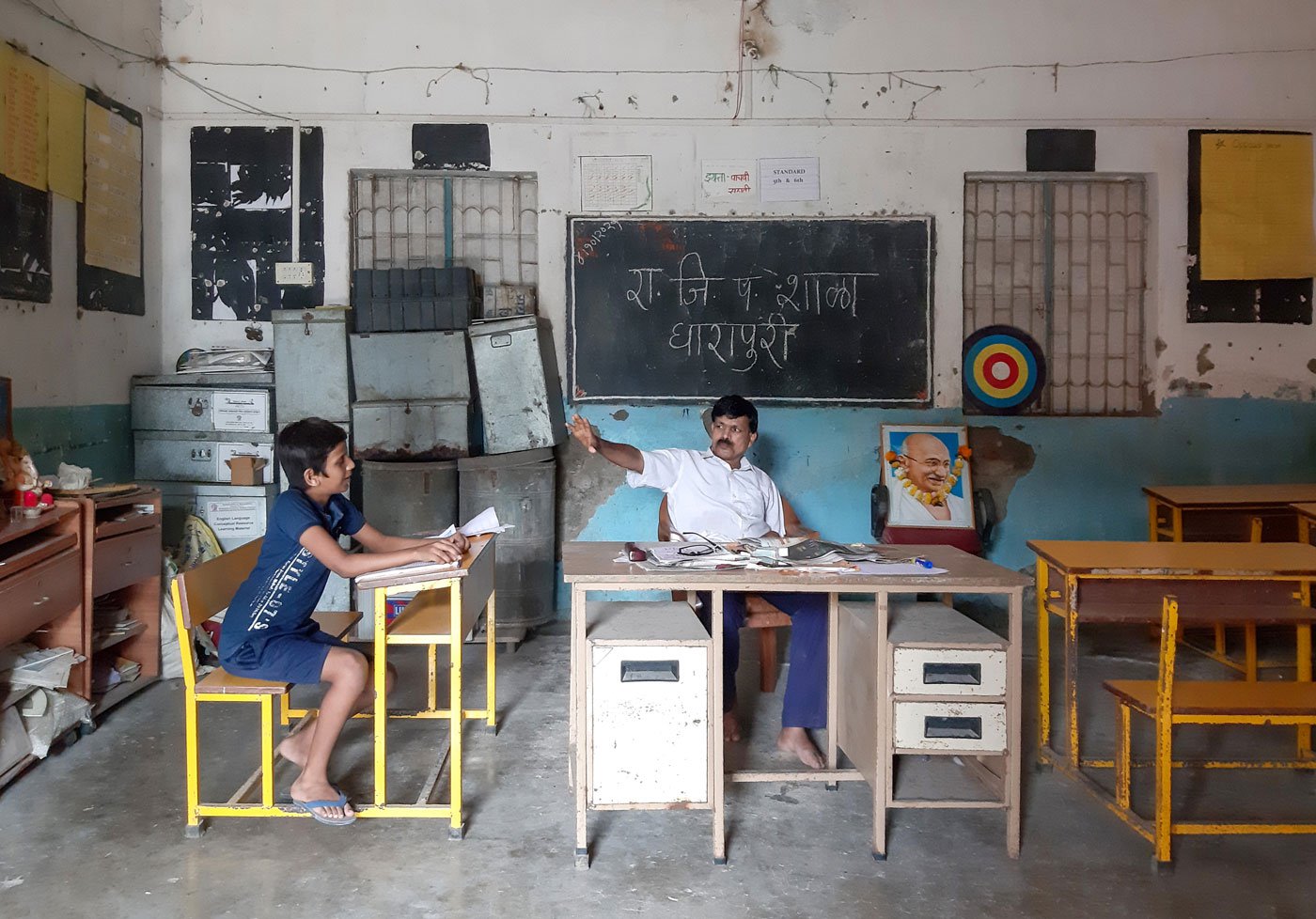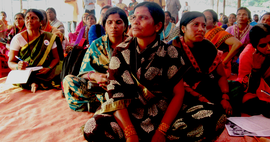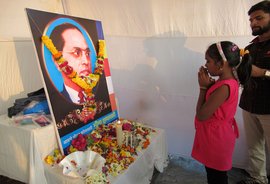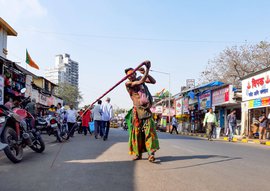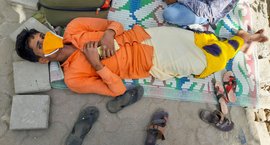Auchit Mhatre had become used to being the only student in his classroom. But to be the last student left in the entire school was certainly new for him.
That’s what happened when 12-year-old Auchit stepped into the classroom around 11 a.m. on October 4 last year, after some 18 months of a pandemic-driven closure. The school’s three rooms were all empty. Only his teacher waited for him, alongside a framed photograph of Mahatma Gandhi placed on a chair.
Right from the time Auchit joined Class 1 in 2015, when he was around six, he had not had any other classmates. “ Fakt meech hoto [Only I was there],” he says. He was also the last student to enrol in his school – which still had around 25 other students then. They came from the three hamlets of Gharapuri village – Morabandar, Rajbandar and Shetbandar – that are home to around 1,100 people. Gharapuri island is a popular tourist spot, known for the Elephanta caves, in Maharashtra’s Raigarh district. From south Mumbai’s Gateway of India, it is an hour by boat.
Auchit’s zilla parishad (ZP) school, with classes from 1 to 7, had as many as 55-60 students more than a decade ago. The numbers began to drop over the years, and by 2019 only 13 students were left. By March 2020 this number fell to seven. And by the 2020-21 academic year, when three had completed Class 7 and two students went away, it left only two – Auchit in Class 6, and Gauri Mhatre in Class 7. “Here studies weren’t happening properly,” she says, “that is why everyone started leaving.”
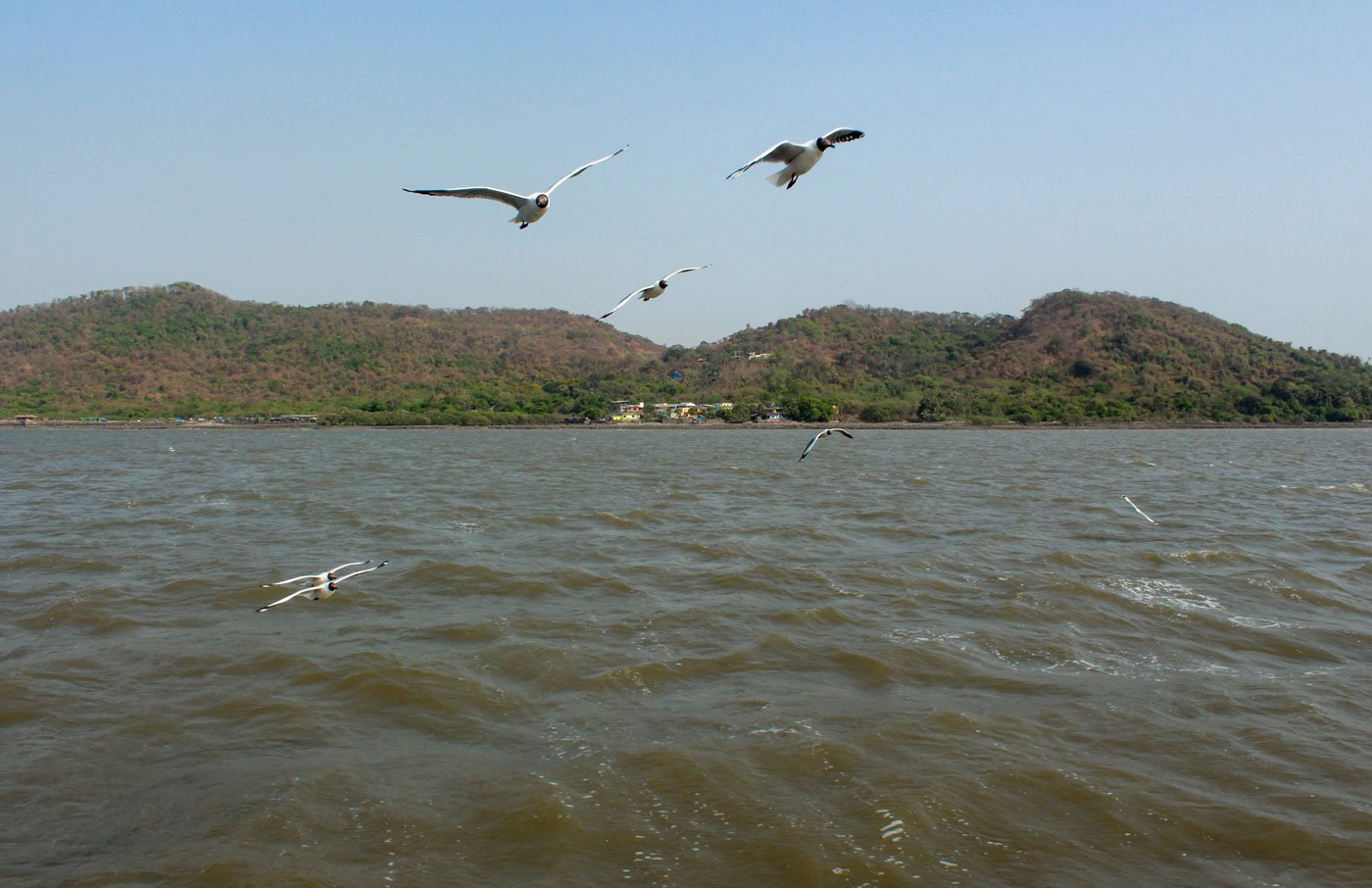
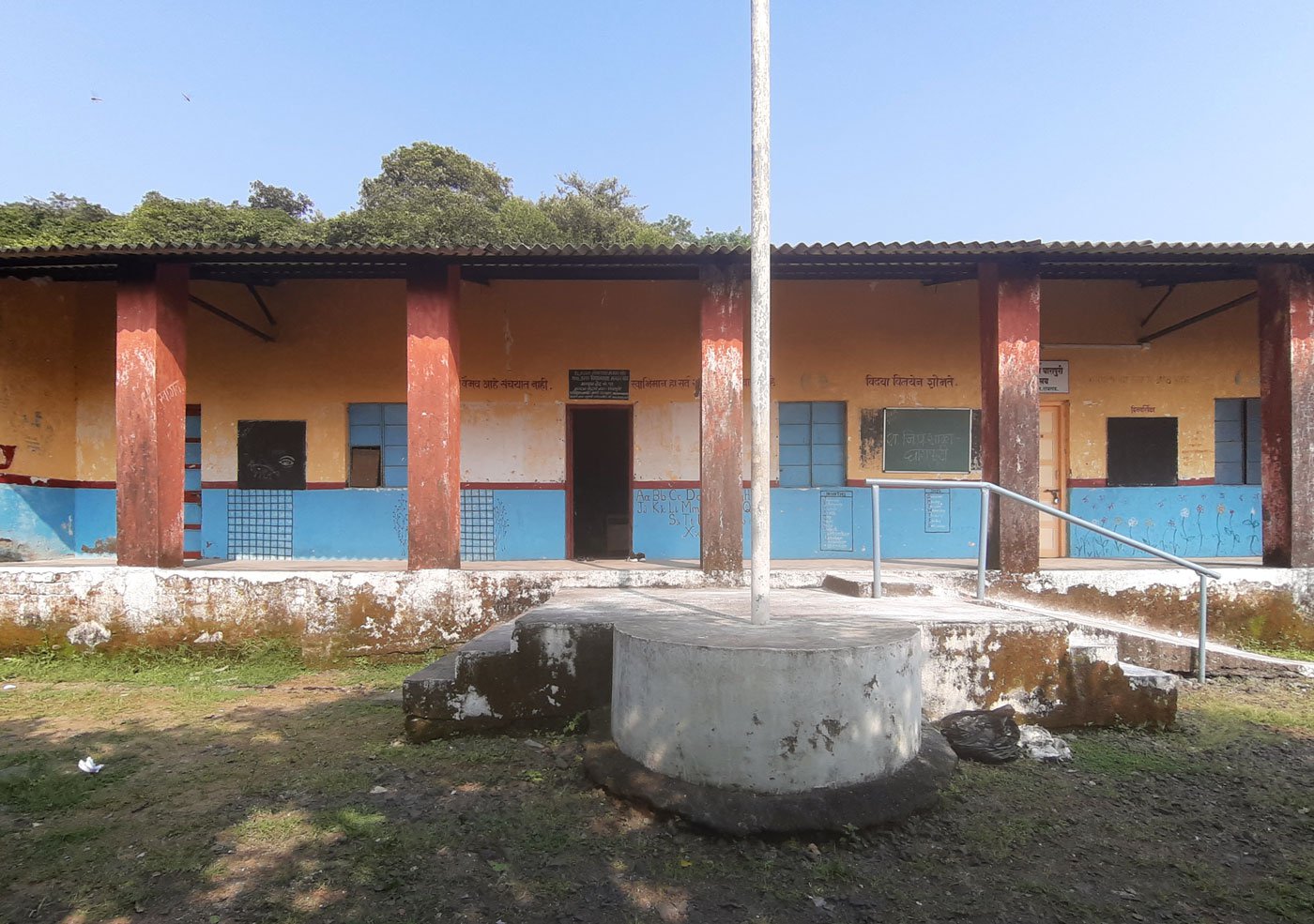
Left: For the residents of Gharapuri, the only way to go anywhere is by boat. Right: For long, the village's zilla parisha d school tried to stay afloat
The reasons for this dispersal are many — an unsteady stream of teachers deterred by distance and the school’s location, poor infrastructure on the island, families struggling with low incomes and limited work options, their need for schooling in the English medium, and the related struggles of students to cope with further studies when they move out of their Marathi-medium Gharapuri school.
Even when at full strength, the ZP school did not have electricity or a water connection. From around the year 2000, Gharapuri had generator-enabled power from 7 p.m. to 10 p.m., and got a steady electricity supply only in 2018, the villagers recall (and by 2019 the water lines improved too.)
Still, the school tried for long to stay afloat. A computer and a laptop were installed around 2014-15 (which could only be charged during the evening hours of electricity). These now lie unused in a classroom. “We used these for some time to teach jingles, maths through YouTube [using our phone’s internet],” says teacher Ranya Kuwar, sitting in the classroom where Auchit is the lone student.
With just three teachers juggling classes 1 to 7 even when there were many students, sessions were at times packed in one room, while some sat outside the classroom or in a small open ground outside.
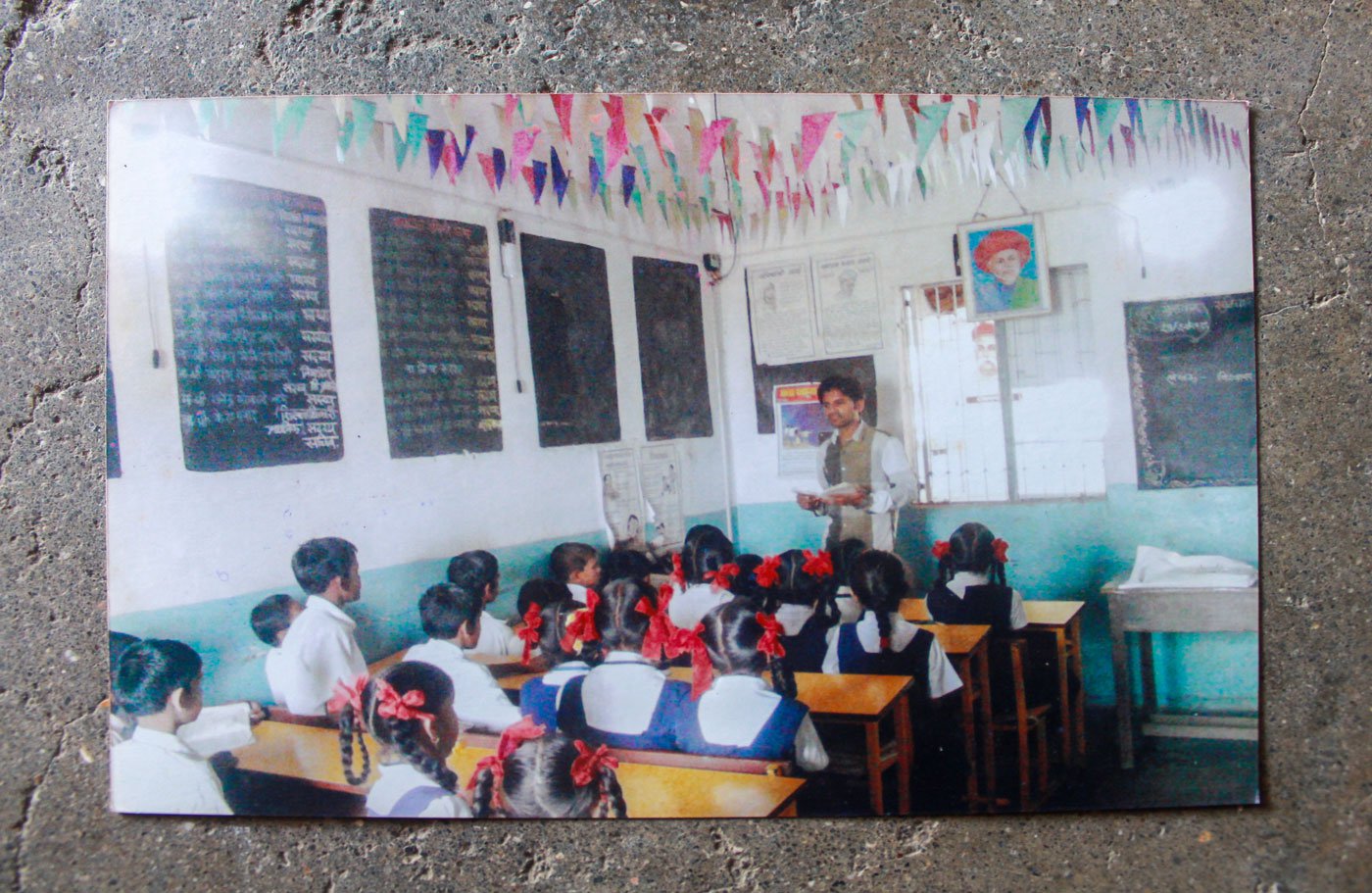
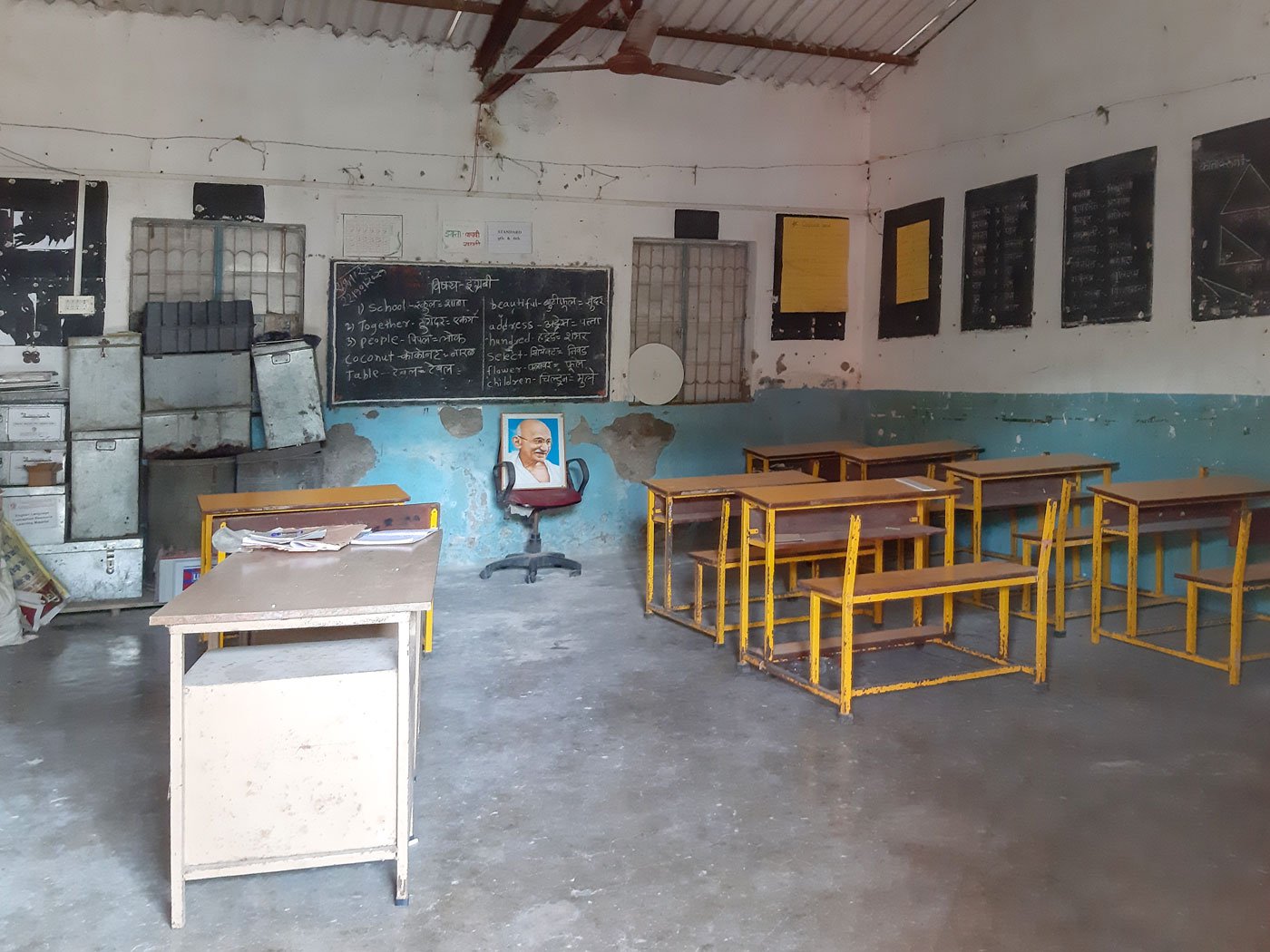
The ZP school had as many as 55-60 students (left) more than a decade ago. By March 2020 only 7 students remained, and slowly this number dropped to one
Not many teachers have been willing to travel for years to and from the island. They have to commute every day to Gharapuri by boat, a ride that takes around 30 minutes from Uran taluka ’s other villages – it’s the only way to get there. During the rainy season (from June to September) classes become even more irregular due to heavy rains and high tides. A lack of facilities in Gharapuri – no ration shops, banks or medical centres – adds to the teachers’ reluctance, and transfers have been frequent.
“Hardly any teachers stayed for more than a few months,” says 14-year-old Gauri. “Everyone had a different way of teaching and it took us time to get used to their ways.”
A few, like 52-year-old Ranya, decided to stay in the village (along with his wife Surekha), paying Rs. 500 as monthly rent. “It wasn't planned that we would stay here for this long. I was told the posting was for a year,” says Ranya, who is from Maharashtra’s Dhule district and began teaching in Gharapuri in mid-2016. Around Diwali in 2019, he suffered a paralytic stroke and left for medical treatment. He returned in August 2020 to find only Auchit and Gauri in school. That month, with just Ranya left to teach, another teacher was appointed (by the ZP office) to work part-time.
On September 3, 2021, the education department of the Raigarh district zilla parishad sent a notice to Baliram Thakur, the sarpanch of Gharapuri village, seeking the closure of the school (because by then it had only one student, Auchit) and advised that any students remaining be shifted to nearby schools (in Uran).
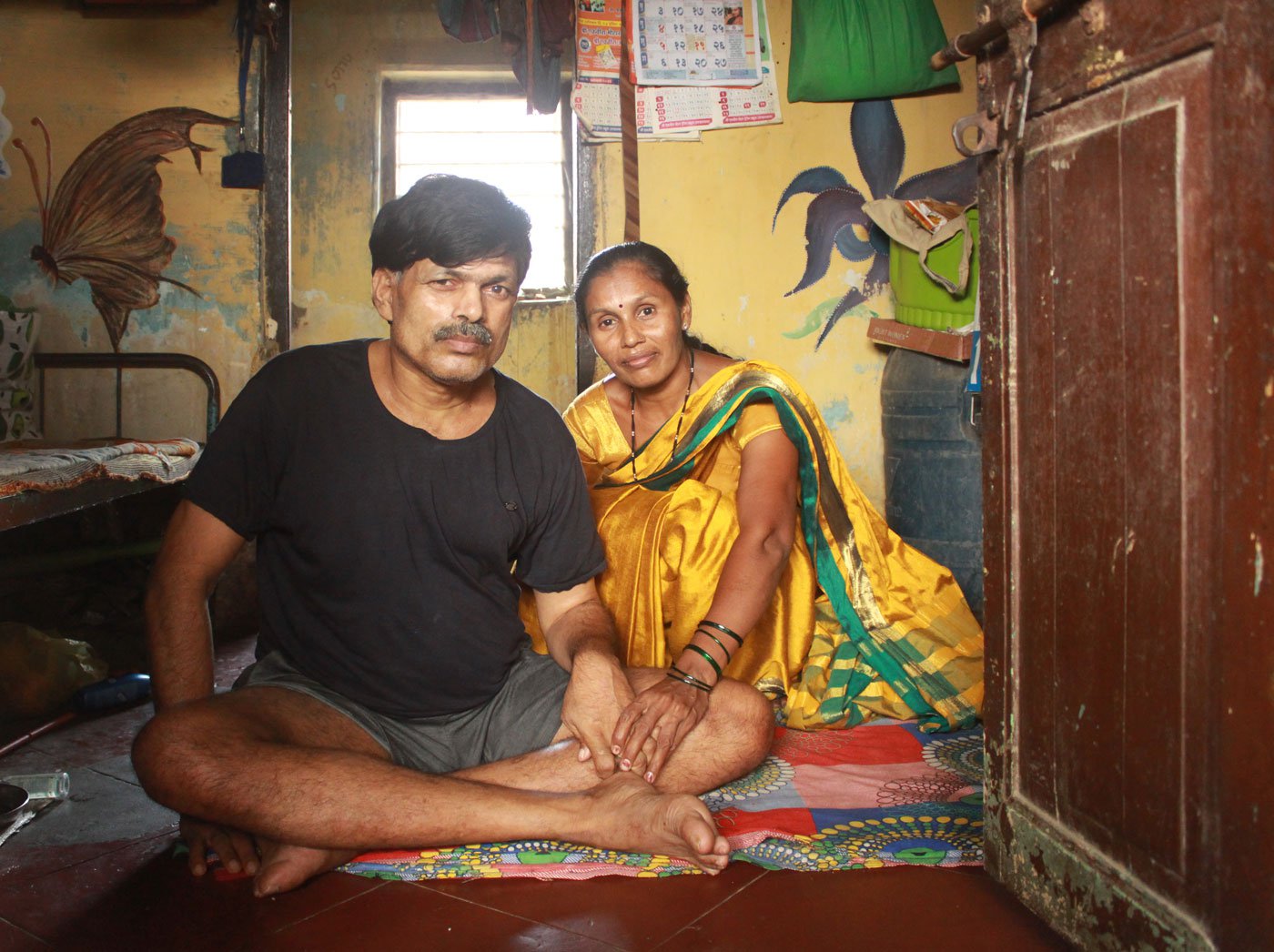
![Sarpanch Baliram Thakur says, ‘If there were support for uplifting the quality [of the school] in our village then surely parents won’t leave’](/media/images/04b-IMG_0870-A.max-1400x1120.jpg)
Left: Teacher Ranya Kuwar (and his wife Surekha) were among the few who chose to rent a place in Gharapuri, rather than commute by boat. Right: Sarpanch Baliram Thakur says, ‘If there were support for uplifting the quality [of the school] in our village then surely parents won’t leave’
Baliram insisted the school continue. “I cannot shut it even if there is one student. Our case is different… of where our village is located and with no other close-by schools,” he says. He refers to the Right of Children to Free and Compulsory Education Act , 2009, which notes that a state-run school must be available to students up to Class 5 within a kilometre’s distance, and within three kilometres for students till Class 8.
“The need for an education has uprooted families here so that their children can attend other schools [in Uran]. If there were support for uplifting the quality [of the school] in our village then surely parents won’t leave,” Baliram adds.
Students from the island have for long been migrating for an education to other villages in Uran taluka or to Navi Mumbai. There, some stay with relatives, or the entire family migrates and lives in rented rooms. Mumbai is nearby too, but the options here are much too expensive for Gharapuri’s families. Most of them are from the Agri Koli community (listed as an OBC), and depend on small stalls on the island selling hats, sunglasses, souvenirs and other items to tourists, or on other tourism-linked jobs at the caves.
“Shifting expenses involve not just school fees but also deposit, rent and other necessities. Plus parents have to look for jobs,” says 38-year-old Vinanti Mhatre, Auchit’s mother. “We can’t shift, how will we earn? I want to send Auchit to a hostel if I can. The high school here has shut down and with the lockdown our income stopped [for months].”
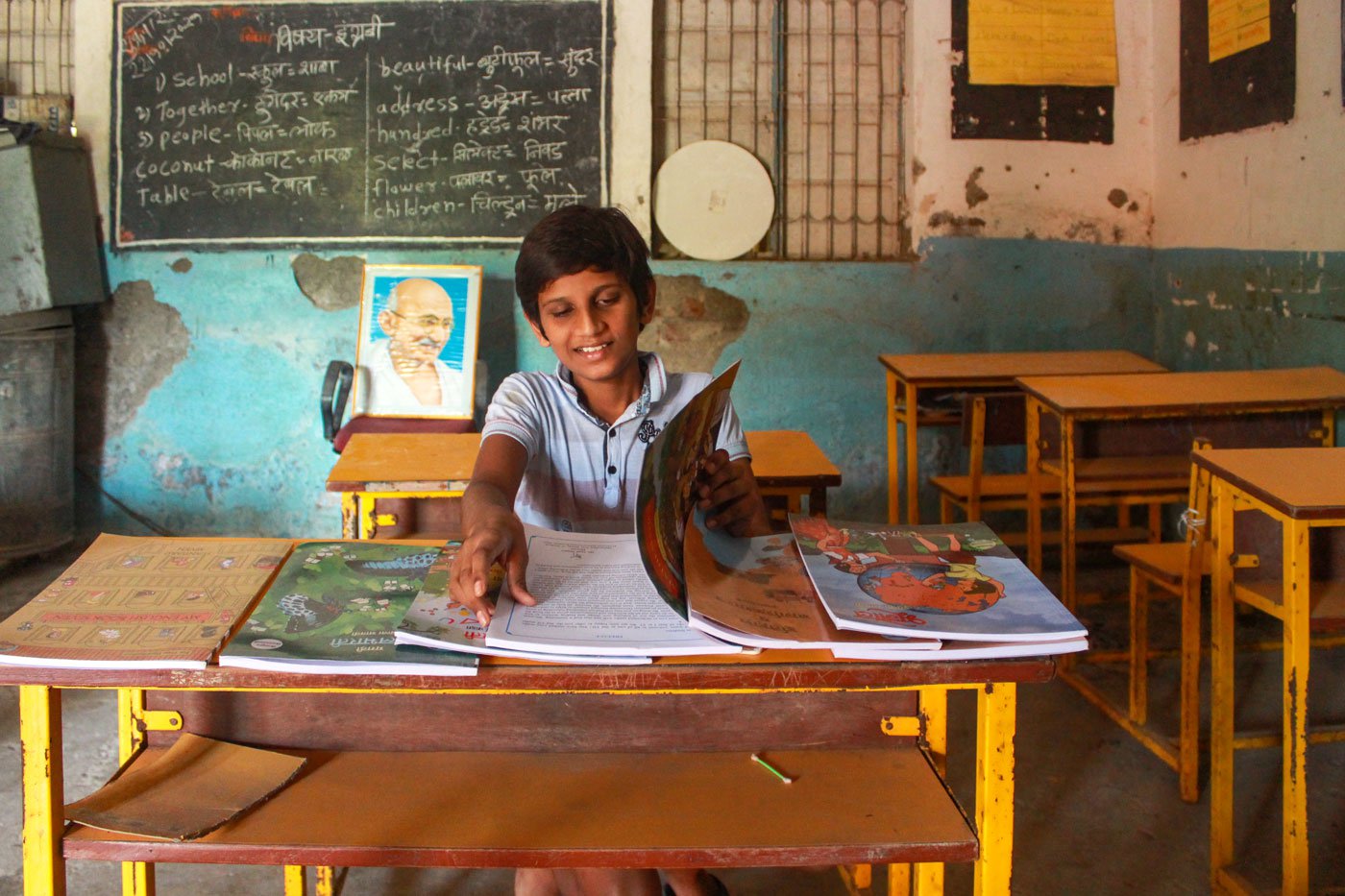
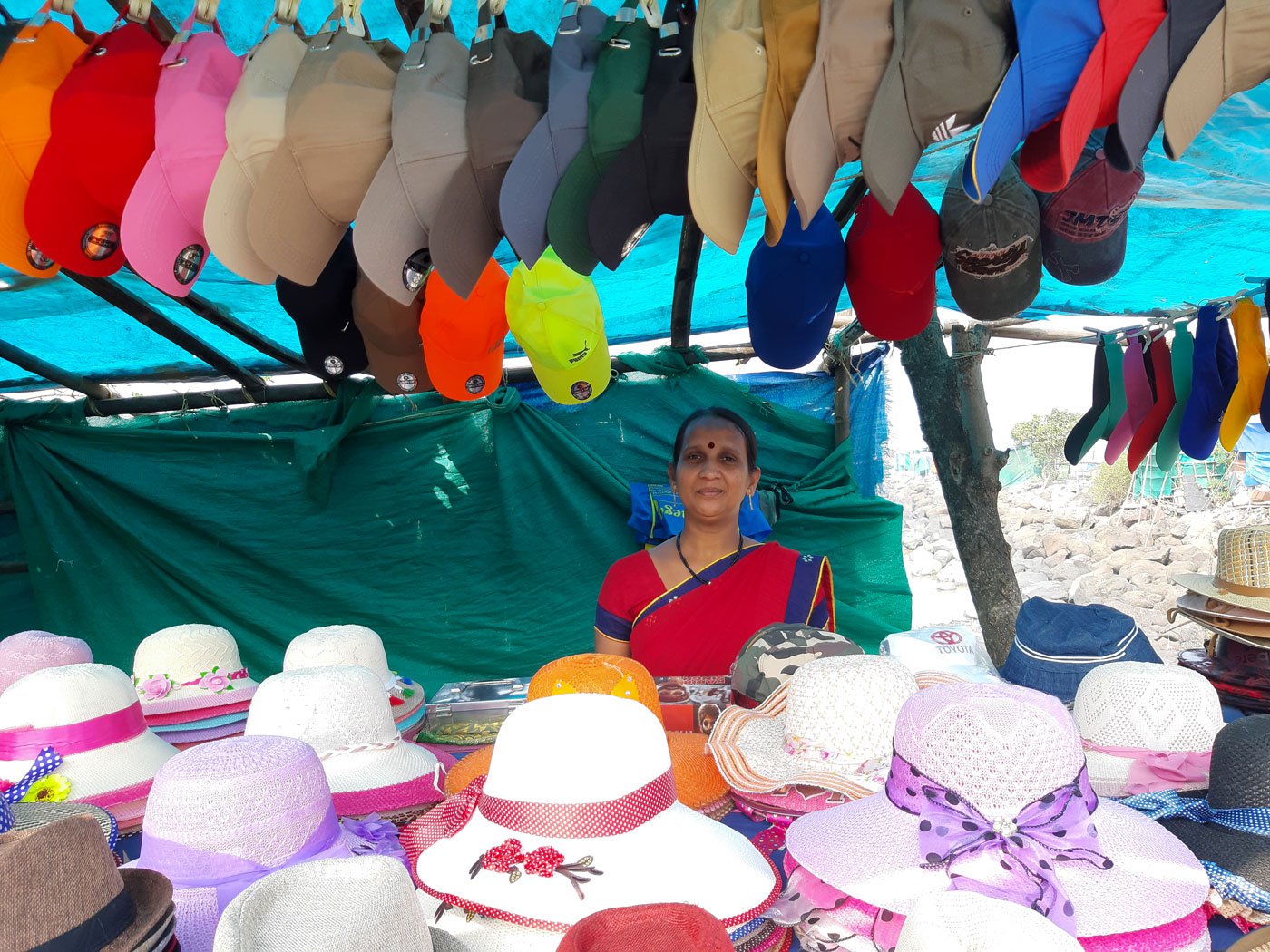
Several families have migrated to villages in Uran or to Navi Mumbai for schooling. But, says Vinanti Mhatre, Auchit’s mother, ‘We can’t shift, how will we earn?’
Vinanti and her husband Neetin, 42, run a makeshift stall along the 120 steps leading from the jetty to Elephanta caves. Before the lockdown began in March 2020, they managed to earn Rs. 6,000-7,000 every month. With the drop in visitors, sales fell, and now they can earn the same amount only in some months. In 2019, Neetin was appointed by contractors (associated with the Archaeological Survey of India, which manages the caves) to clean the monument for a monthly salary of Rs. 12,000. That year their elder son, 18-year-old Aditya, completed Class 10 in the village high school, and Neetin’s salary helped him move to Uran to study further. (In March 2022, Neetin lost the cleaning job due to, he says, payment disputes.)
The Marathi medium KES Secondary Vidyalaya in Gharapuri for Classes 8 to 10, where Aditya studied, was started in 1995 by the non-profit Konkan Education Society. Suvarna Koli, 40, an anganwadi worker in the village, recalls her excitement when the high school opened:
“After my 7th [in 1992] there was no school to go further,” she says. “For our parents our options were marriage or working in a shop.” Suvarna’s mother worked as a cook in a village food stall and her father did farming and assisted the sarpanch . Suvarna wanted to become a nurse, and though she could not reach that goal, she says with a smile: “At least I got to complete Class 10 [in 1998],” and that too with top-ranking grades.
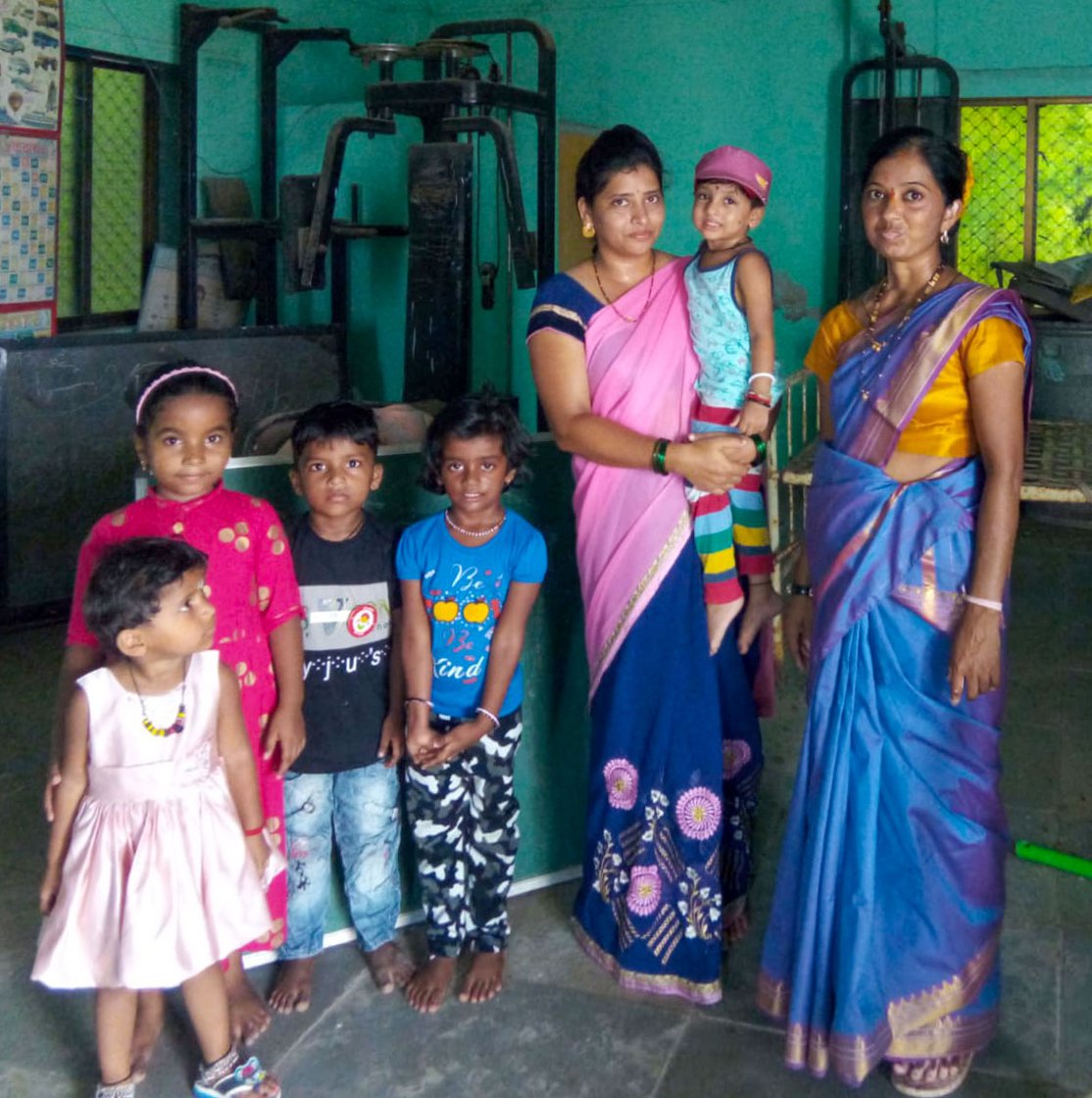
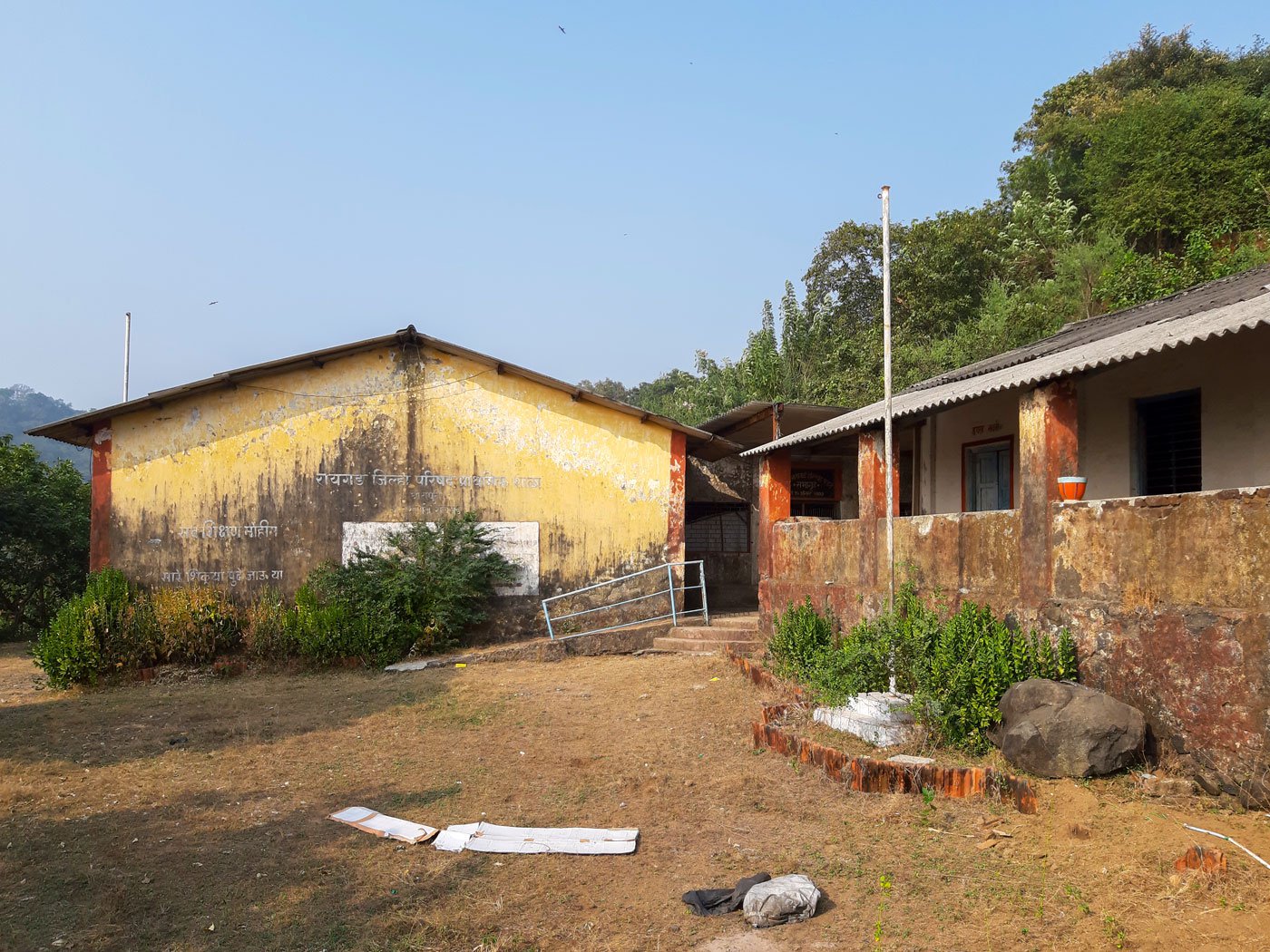
Anganwadi worker Survana Koli (standing, extreme right), was excited when a high school (right, foreground) opened here in the '90s. But that too shut down in 2020
At its peak, four teachers taught around 30 students in the no-fees KES Secondary Vidyalaya. Among them was Navneet Kamble. For six of the 12 years that he taught in Gharapuri, he stayed in the village itself. After he got married, he would travel by boat from Uran. “Students who joined in eighth standard would struggle to pick up on studies [after their unsteady ZP school education], and many were disinterested,” he says.
Gradually, the number of teachers and students in the high school too began to fall. The school struggled for funds, and began closing down one class a year – starting with Class 8 in 2018, Class 9 in 2019, and finally Class 10 in 2020.
The closure of the high school and the barely-surviving ZP school have been changes in a direction that is opposite to what the Annual Status of Education Report (Rural ) (October 2020) recommends: that children from disadvantaged backgrounds studying in government schools need more help after the lockdown.
While anganwadi worker Survana Koli and a colleague continue to run anganwadi classes for the 40-odd kids in Gharapuri in the 0-6 age bracket, none of the 21 children in the 6-14 age group are now enrolled in the island’s zilla parishad school. (These student numbers were compiled in separate surveys by Koli, and by Ranya and Surekha Kuwar). Seeing the decline of the ZP school and anticipating its closure, over the years parents in Gharapuri have been enrolling their kids in other schools in Uran.
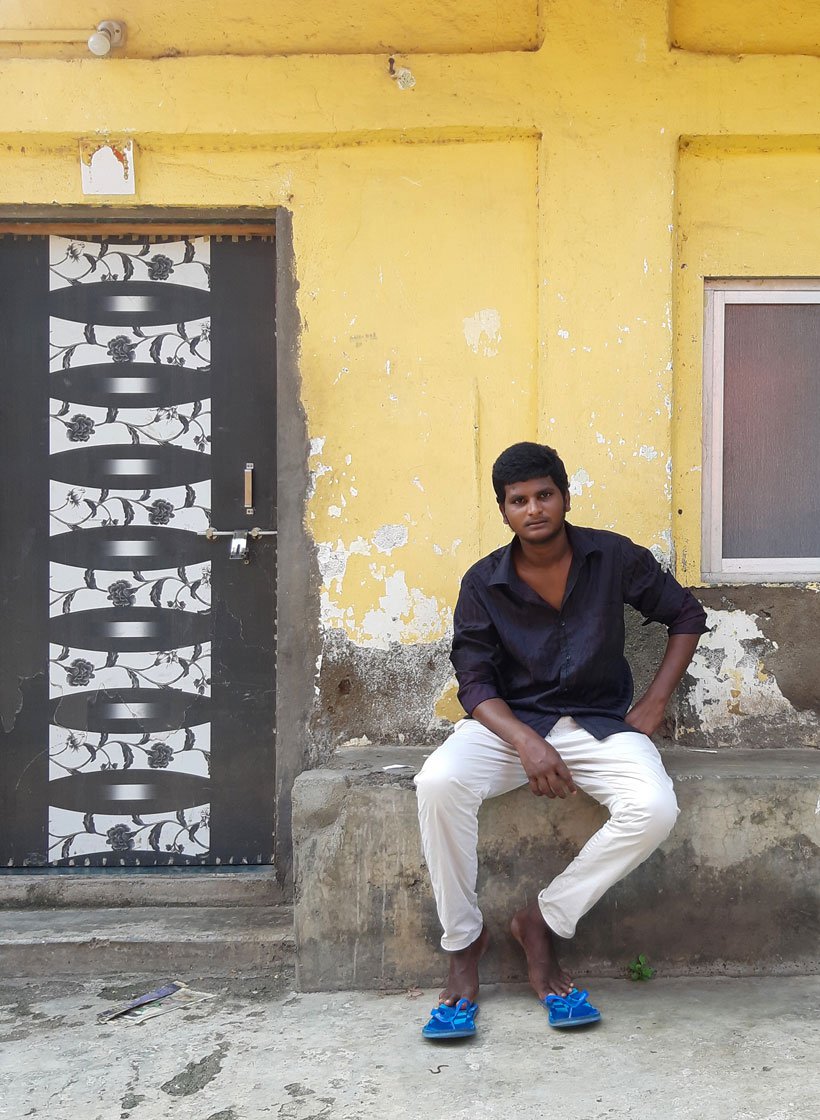
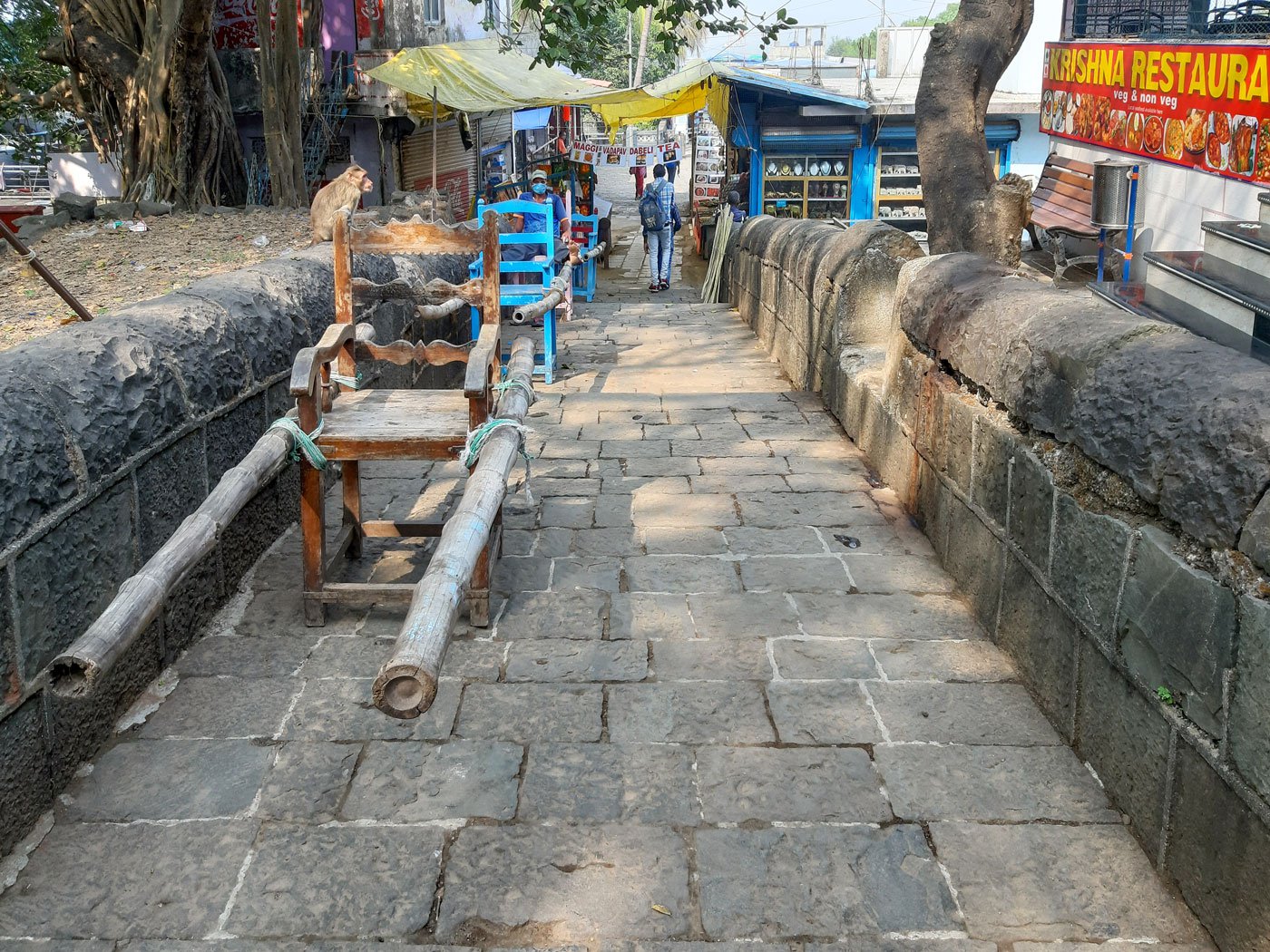
When the high school closed, for students still studying in the ZP school it meant moving from Gharapuri right after Class 7, as did Kalpesh Mhatre (left), who eventually found work as a ‘ kursiwallah’ (right) at Elephanta caves
When the high school closed, for students still studying in the ZP school it meant moving from Gharapuri right after Class 7, as did 16-year-old Kalpesh Mhatre, who shifted to a school in Nhava village, then left that midway. “ Bas, nahi ho raha tha [I just couldn’t manage],” he says. Kalpesh then began working on the island as a kursiwallah – he and three others carry tourists on a wooden chair till the caves. A team of four does 3-4 such rounds a day, earning a total of Rs. 300-500 per round.
A few students in Gharapuri though have managed to study further. Bhavika Mhatre, Gauri’s elder sister, completed Class 10 in 2016 in the village high school, then got a BA degree in Panvel. But after her parents passed away in early 2020, she returned to Gharapuri where she runs their stall selling snacks and ornaments. Gauri is now staying with relatives in Panvel, where she attends Class 8.
“Aai and Baba [mother and father] pushed us to study more. Aai had studied till 8th, she wanted to study further but could not, and Baba wanted to join the Navy but his father passed away so he took on the family’s responsibility,” says 20-year-old Bhavika. “He would sit with us to teach Hindi, maths, and tell us to learn everything. He was a self-taught painter, a DJ at village weddings. He had enrolled me in other classes… tailoring, typing. He wanted us to get into competitive exams and apply for the IAS or become lawyers…”
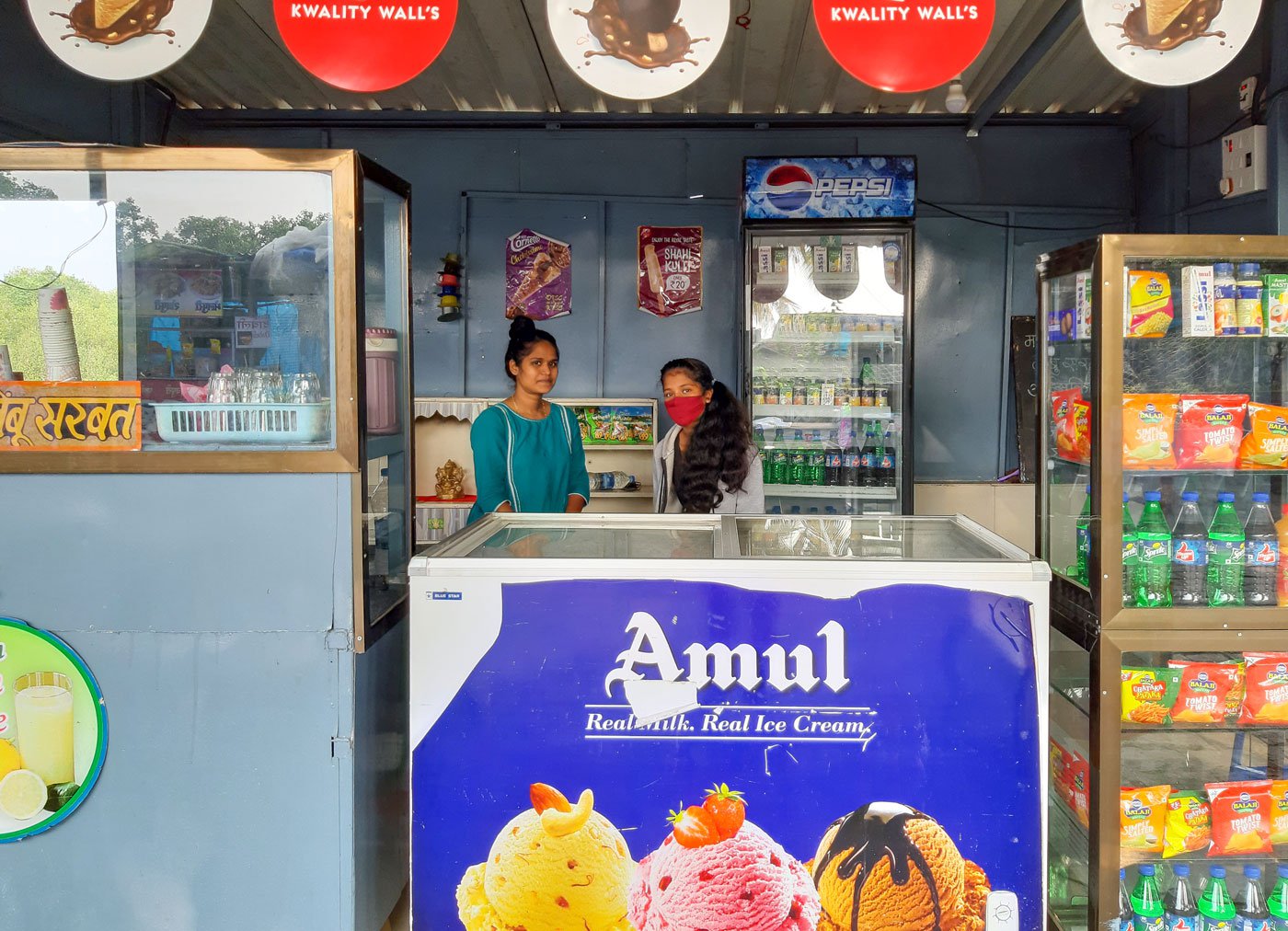
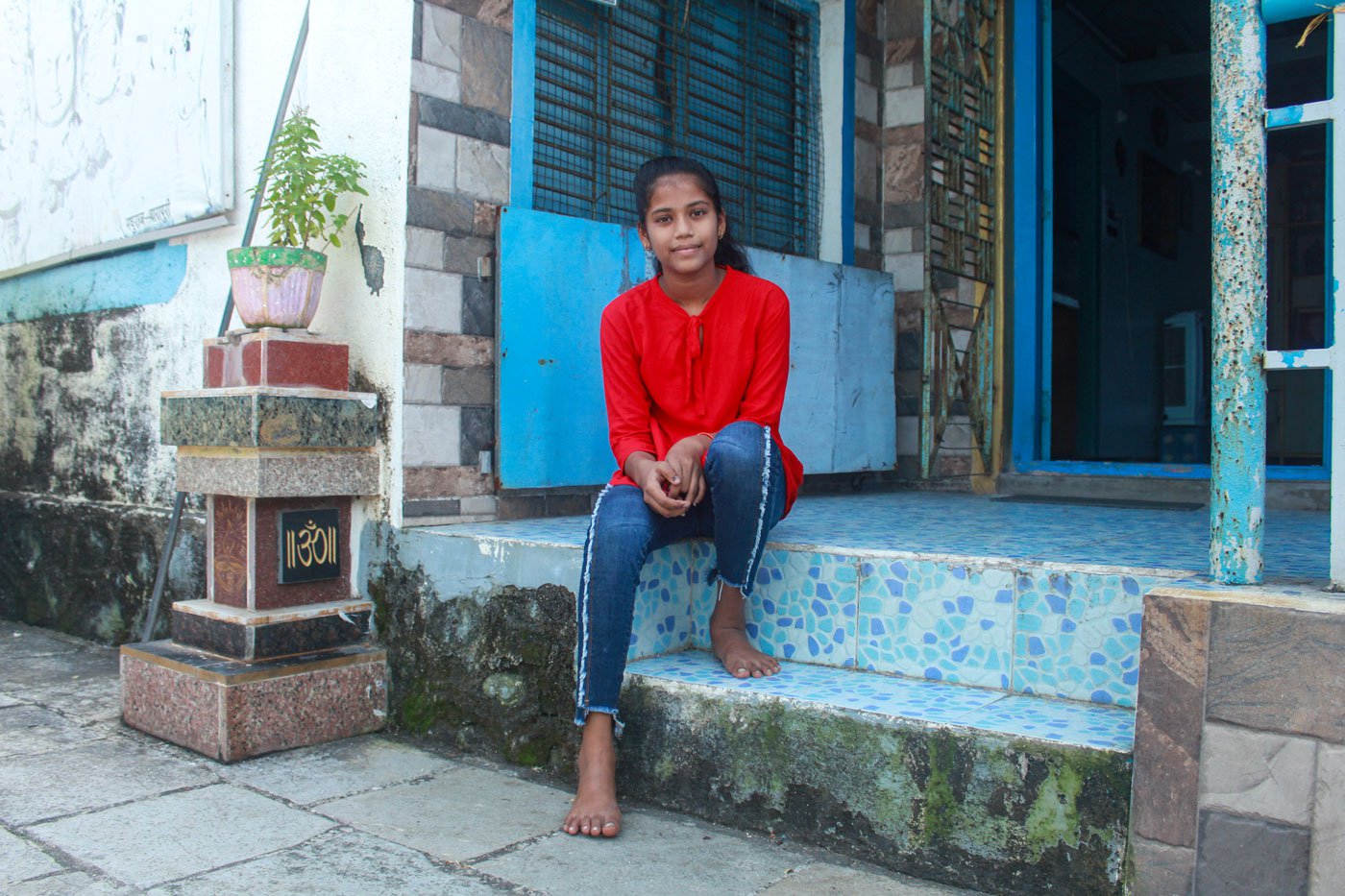
Only a few have managed to study further, like Bhavika Mhatre (left), who has a BA degree. Her sister Gauri (right) was the second last student left in the ZP school
But the many hurdles on the road to education in Gharapuri ensure that only a few like Bhavika can study further. The Household Social Consumption on Education (NSS 75th Round, 2017-18) shows that only 5.7 per cent students in rural India of age 15 and above had studied till graduation or more. In rural Maharashtra, the number was slightly better, but still a low 12.5 per cent studying at the graduate level or beyond. The survey notes that students drop out due to a lack of interest in education, an inability to cope with studies or the medium of instruction, distance to school, financial constraints, and engagement in domestic or economic activities.
Among them in Gharapuri is Sonal Mhatre, now 23, who in 2016 completed Class 12 in Uran, staying there with relatives. Then her family’s slim income – her mother has a stall selling chips and her father works on a boat in Uran earning Rs. 5,000 a month – compelled her to return to Gharapuri.
Vinay Koli too left his studies in Uran after Class 12 in 2019; he was in a partly Marathi-medium commerce stream where the accounts course was in English. “A lot of time was spent in understanding what is written,” he says. In January 2020, he started working in the Elephanta caves as a contractual ticket collector for a monthly salary of Rs. 9,000.
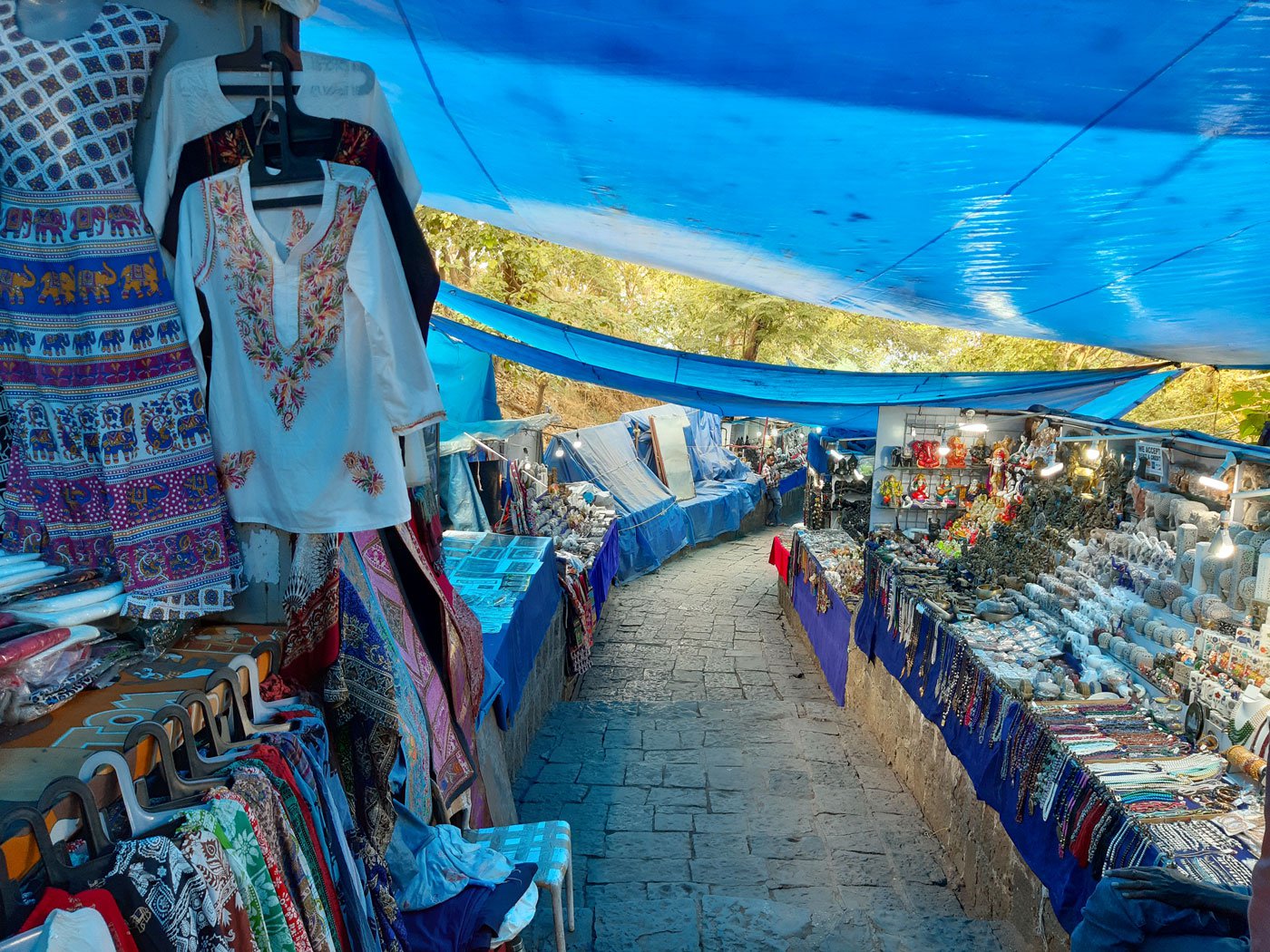
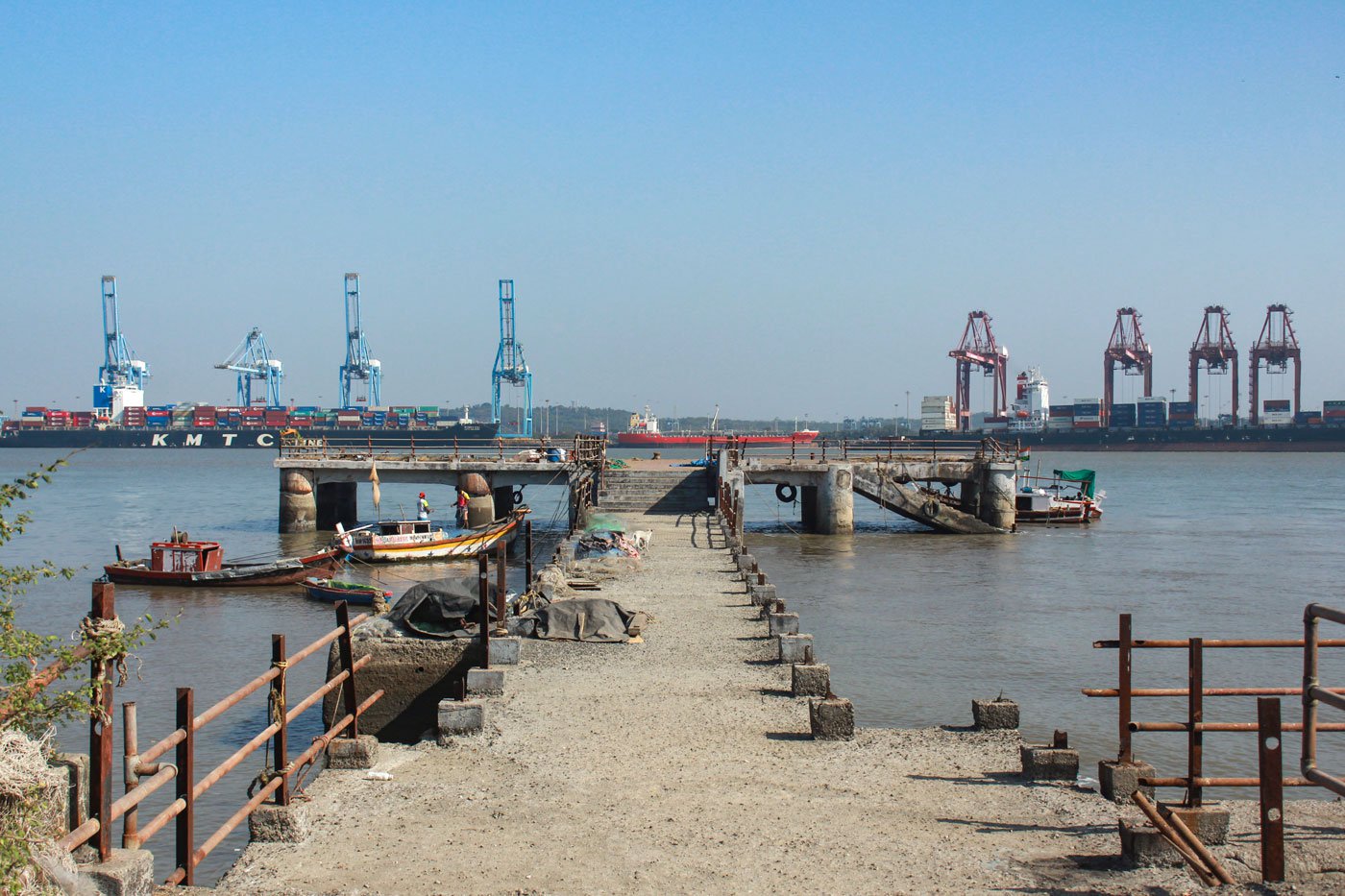
Many of the island's families depend on small stalls near the jetty and on tourists who come to the caves. Right: E ligibility requirements in the Maharashtra government’s plans to upgrade selected ZP include 'good road connectivity'. Gharapuri clearly does not qualify
Some students from Gharapuri opt for vocational courses for a year or two after Class 12, training to be electricians, plumbers, welders, turners and other similar occupations. “Such courses [can only] lead to ‘blue-collar’ jobs,” observes Bhausaheb Chaskar, Ahmednagar-based education activist and teacher. “Those who are unable to access the road to higher education are usually from marginalised communities.”
On Gharapuri island, the road to even primary education has now closed.
In September 2021, the Maharashtra government announced that around 500 zilla parishad schools in the state would be transformed into ‘model schools’, with upgraded, infrastructure, teaching and other measures. Eligibility requirements include: “school location should be central and have good road connectivity.”
Gharapuri clearly does not qualify. With Auchit completing Class 7 this year, and no other student left in school, the ZP school on the island will be closing down from April.
